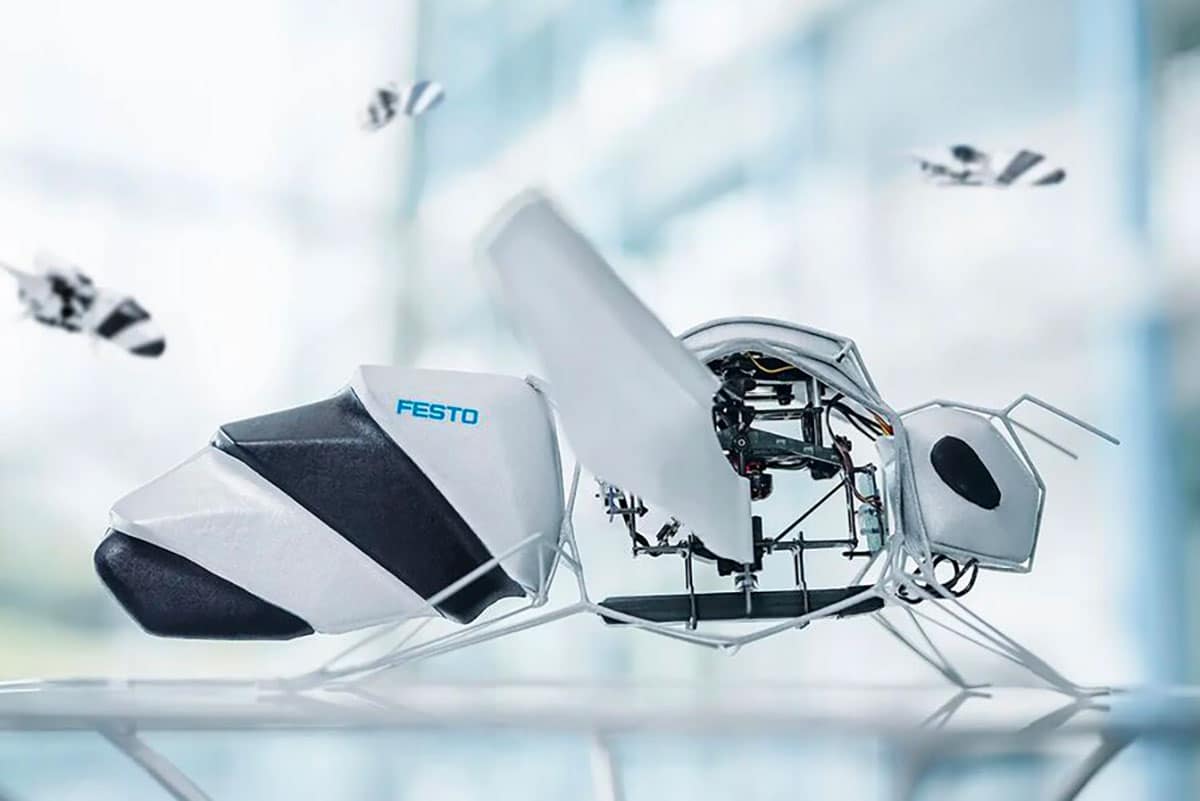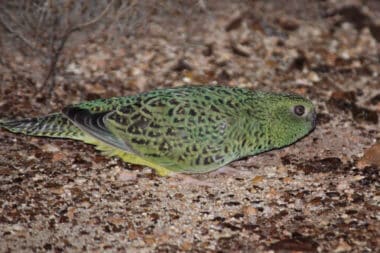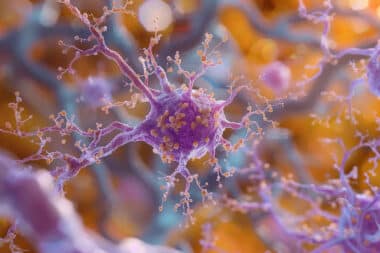Festo, a German company specializing in automation systems, has developed the BionicBee, a lightweight robot that mimics the behavior of real bees. These miniature marvels weigh a mere 34 grams, about half the weight of an egg, showcasing the impressive feat of miniaturization achieved by the engineers.
The BionicBee’s most striking feature is its ability to fly autonomously in large numbers, emulating the complex swarm behavior observed in nature. This breakthrough is the result of extensive research into bee flight mechanics and swarm dynamics. Denis Mugrauer, CEO of Festo, explains :
“Our latest project, Bionic Bee, draws heavily from our studies of real bees. What makes them so remarkable is their agile flight and swarm behavior. By analyzing these natural characteristics, we’ve learned a great deal about lightweight design and bee flight mechanics.”
The coordination of these robotic bees relies on a sophisticated indoor localization system utilizing ultra-wideband technology. Each BionicBee is equipped with an internal GPS that allows it to determine its position in 3D space and share this information with other members of the swarm. This intricate communication network is crucial for replicating the complex, coordinated behavior observed in natural swarms.
Technical marvels behind the bionic buzz
The development of the BionicBee took two years and involved overcoming numerous technical challenges. These bio-inspired robots comprise several key components :
- A compact wing-flapping mechanism
- Advanced control technology
- Spatial adaptation capabilities
- A permanent magnet motor
- Three servo motors
- An integrated battery
- A gearbox
- Various circuit boards
One of the most innovative features of the BionicBee is its automatic calibration function. As each robot is hand-built, slight manufacturing differences can influence flight behavior. To address this, each prototype undergoes a brief test flight, during which it individually optimizes its performance.
The BionicBee is small, ultra-light and can fly autonomously in a swarm thanks to an indoor localisation system with ultra-wideband technology.
📹 [Festo BionicBee] pic.twitter.com/IwR5aOg44n
— TheTechAnonGuy 🤖 (@TheTechAnonGuy) May 1, 2024
The central computer system plays a crucial role in coordinating the swarm’s movements. It defines a predetermined path for the bees to follow, taking into account potential mutual interactions due to air movements. This level of precision ensures smooth, collision-free flight even in large swarms.
Festo’s legacy of bionic innovation
The BionicBee is the latest addition to Festo’s impressive lineup of bionic flying objects developed under the Bionic Learning Network program. This research initiative, established in 2006, brings together universities, research institutes, development companies, and private inventors to create nature-inspired prototypes.
Over the past 15 years, Festo has unveiled a diverse range of bionic creations, including :
| Bionic Prototype | Inspiration |
|---|---|
| Fish-tail system | Fish locomotion |
| Elephant trunk-inspired manipulator | Elephant’s prehensile trunk |
| Bat-like flying robot | Bat’s wing structure and flight patterns |
These innovations showcase Festo’s commitment to pushing the boundaries of automation technology through biomimicry. By studying and replicating nature’s most efficient designs, the company continues to drive innovation in fields ranging from robotics to industrial automation.
Future implications and applications
The successful development of the BionicBee opens up exciting possibilities for various industries and applications. Some potential uses for these swarm-capable aerial robots include :
- Environmental monitoring and pollination assistance in agriculture
- Search and rescue operations in disaster-stricken areas
- Inspection of hard-to-reach infrastructure, such as bridges or tall buildings
- Entertainment industry applications, such as coordinated light shows
- Scientific research into swarm behavior and collective intelligence
As Festo continues to refine and expand upon this technology, we can expect to see even more innovative applications emerge. The BionicBee represents not just a technological achievement, but a new paradigm in how we approach complex problems through bio-inspired engineering.
With its lightweight design, autonomous flight capabilities, and sophisticated swarm intelligence, the BionicBee stands as a testament to human ingenuity and the endless possibilities that arise when we look to nature for inspiration. As we move forward, these tiny robotic marvels may well become integral to solving some of society’s most pressing challenges, all while buzzing quietly overhead in perfect harmony.










There is NOTHING special. Nothing a normal drone couldn’t do for (probably) a fraction of the price looking at the list of the “bionicbees” abilities. Rubbish. One gust of wind and it’ll be “gone”! He’s having to sit in a room to fly it in the video provided. What a waste of talented people who could be working on something people could use in real world situation.